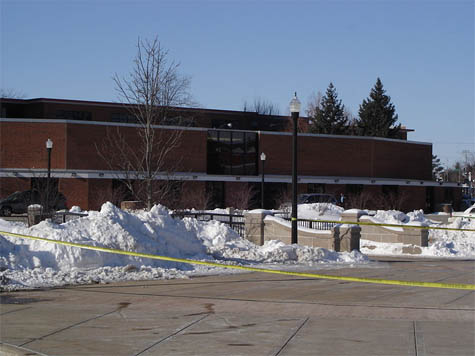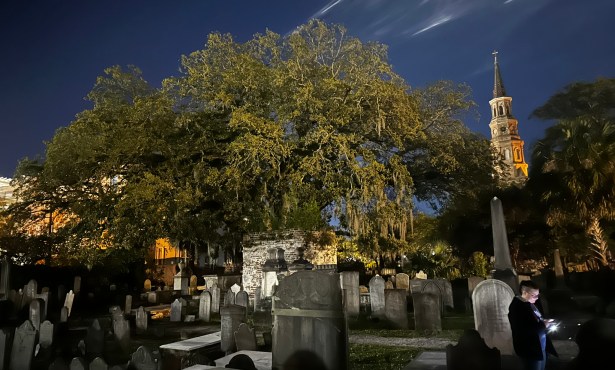Starbucks, iPods, School Shootings
When a Generation Is Remembered for Its Trends

The proliferation of the personal computer, the creation of social networking sites, the disappearance of music from MTV, the attacks on September 11, the phenomenon of YouTube, the worldwide spread of Starbucks, the AIDS pandemic, the war in Iraq, the riots in 1992, global warming, reality television and ultra low-rise jeans – these are just a few of the things with which my generation will be forever associated. These are our collective consciousness, our shared cultural history and the foundation upon which our generational connection to one another is built.
For better or worse, our connection to other people tends to be built largely on shared cultural experiences. This may not be news, but what is fairly new and somewhat specific to our generation is the extent to which pop culture builds bonds across national and even international boundaries. Since we were seven or eight years old, we’ve been watching the worldwide web grow into a globe-spanning network of collective cultural consciousness and shared social space.
When someone blogs about the Backstreet Boys in Boise, the twenty-something reading it in Britain gets it immediately. When someone mentions slap bracelets or creates a Facebook group devoted to the bygone computer game Oregon Trail, every Generation Y-er with internet access gets to reminiscing right away. When The Spice Girls come on in the car, you can guarantee that any girl within earshot will start singing along.
And, when someone talks about leaving his iPod behind as he fled a lecture hall under siege in yet another school shooting, it resonates. It is a sad truth that the phenomenon of school shootings is something else our generation shares with one another. From Arkansas to Alaska, tragedies in which students innocently attending class were brutally dispatched by disgruntled gunmen seemed to occur with alarming regularity throughout the 1990s and early 2000s. According to Wikipedia alone, more than a dozen school shootings happened in the United States between 1991 and 2001. And, while the details were different every time, the sorrow borne from each shooting was the same.
Yet again, we shared experiences across environs. From the West Coast to the East, the North, the South and everything in between, every student in our generation can recall filing into cafeterias, multipurpose rooms, lecture halls and large rooms to hear about the horrors that befell students in some distant district, to receive the same warning about watching for suspicious activities and to know that no matter how many metal detectors the PTA insisted on installing, the same thing could happen much closer to home next time. For some people it did. For others, the phenomenon manifested itself in milder incidents – the kid caught with a gun in his locker, the resident outcast ousted for the hit-list in his binder, the ban on big trenchcoats. Whatever the way, we all felt the impacts of incidents at Columbine, Jonesboro, Bethel, Parker, Granite Hills, Thurston and many – too many – more.
For those of us who graduated from high school in and around 2004, school shootings were an all-too-familiar phenomenon. But, they were one that, for the most part, remained associated with the crowded cafeterias and lonely libraries of elementary, middle and high school. Blaming the tragedies on stereotypical student outcasts forced into violent despair by the volatile combination of disenfranchisement and adolescent angst, driven to do the unimaginable because nobody wanted to sit with them at lunch. Of course, that’s an oversimplification. But, that’s how things beyond the grasp of even the grown-ups were explained to us as children. And, of course, it was much easier to accept that than delve too deeply into why, exactly, someone would brutally slay their fellow students. Even when the school shooting phenomenon followed us to college, it was still relatively easy to rationalize according to the old logic – crazed outcast lets his loneliness and his lunacy get the better of his more humane instincts. Virginia Tech was a tragedy, but the sad truth is that it was nothing we hadn’t dealt with before. The classrooms may have gotten bigger, the campuses more expansive and the victims more adult, but the situation was the same.
But, the Feb. 14 shooting at Northern Illinois University was different. This time, the gunman got much better press. This time, he was an outgoing, outstanding student working on a degree in social work – a man who, for all intents and purposes, could only be classified as “normal,” rumors that he may have recently stopped taking medication of some sort notwithstanding. He wasn’t wearing a trenchcoat, or enacting some easily-explained fantasy from whatever video game happens to be bearing the brunt of society’s scrutiny at the moment. He was just a person, just like any other recent college graduate.
Except that, for whatever reason, this guy decided to take the lives of six students sitting innocently through the last fifteen minutes of an introductory Oceanography class.
When I started writing this column, I went into it without a plan. I had hoped that if I let the thoughts flow freely, they might coalesce into some sort of coherent conclusion, some comforting platitude or at least, some silver lining to take away from this unbelievable tragedy. After all, I’m the Indy‘s token college columnist. Surely, I could figure out some way to write about this, some perspective to provide, or at least something worth saying about it.
But, I can’t.
School shootings are something my generation has been dealing with for over a decade. Everyone in my age group is certainly aware of all of them, if not directly connected to at least one discrete day in which we too experienced the kind of fear that can only come from knowing that nowhere – not even the hallowed hallways of your high school – is safe. And yet, I can’t even begin to make sense of what happened at NIU last week. All I can do is offer my hopes and prayers to the people affected, and continue to keep my eyes open on my own campus.
Maybe that’s all any of us can do.
After all, how do you make sense of something so utterly senseless?



